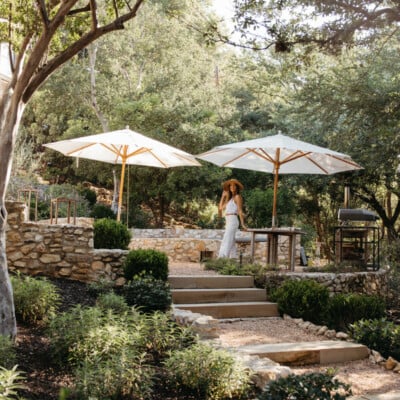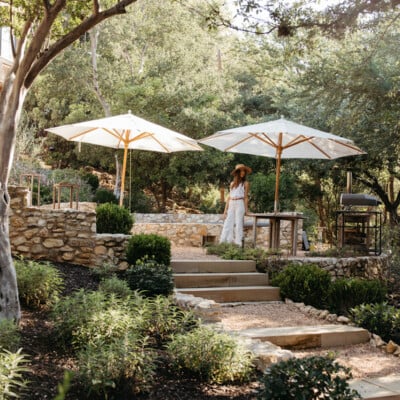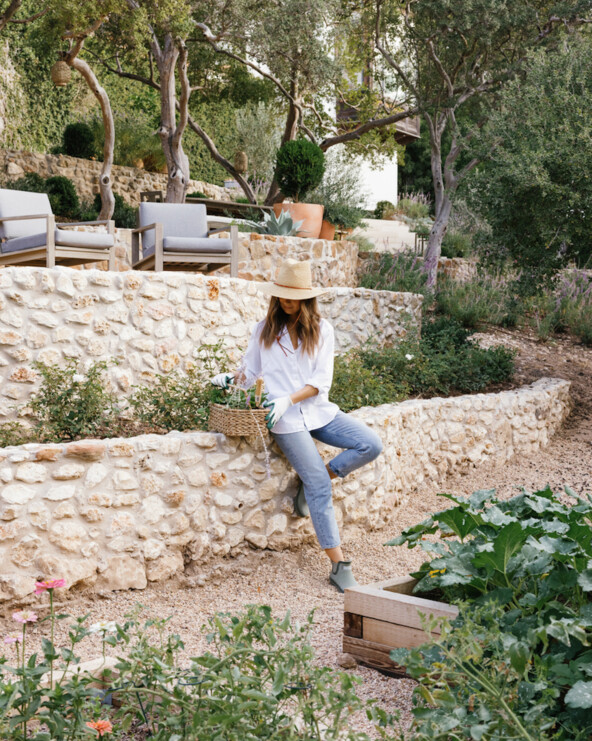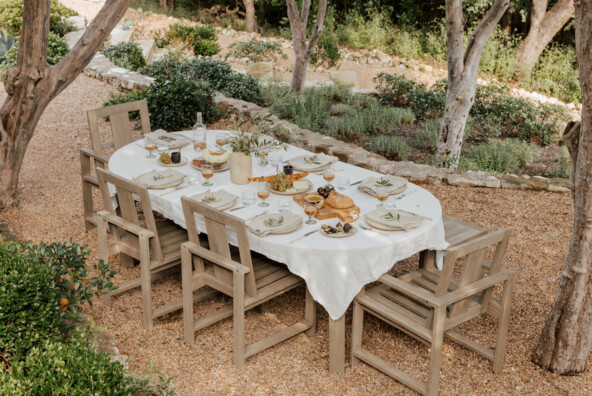We may receive a portion of sales if you purchase a product through a link in this article.
Plants are life. Literally. Having outdoor space to foster them? Even more so. As someone who has lived in an array of homes, from the quintessential 300-square-foot starter apartment to a lone mountain house with a backyard that opened to a national park, I know the importance of green space in adding vibrancy to mood and meals. Wherever you can get it, you should.
I also know green space is easier wished for than found. City living, smaller lots, and a lack of time can each present challenges to growing a garden, especially when it feels like there’s a steep learning curve to getting it right. This is where tiny spaces can save you. With some intentional creativity, be encouraged. Beauty and nourishment can be cultivated in even the smallest corners of home.
Feature image from our interview with Mary Ralph Bradley by Michelle Nash.
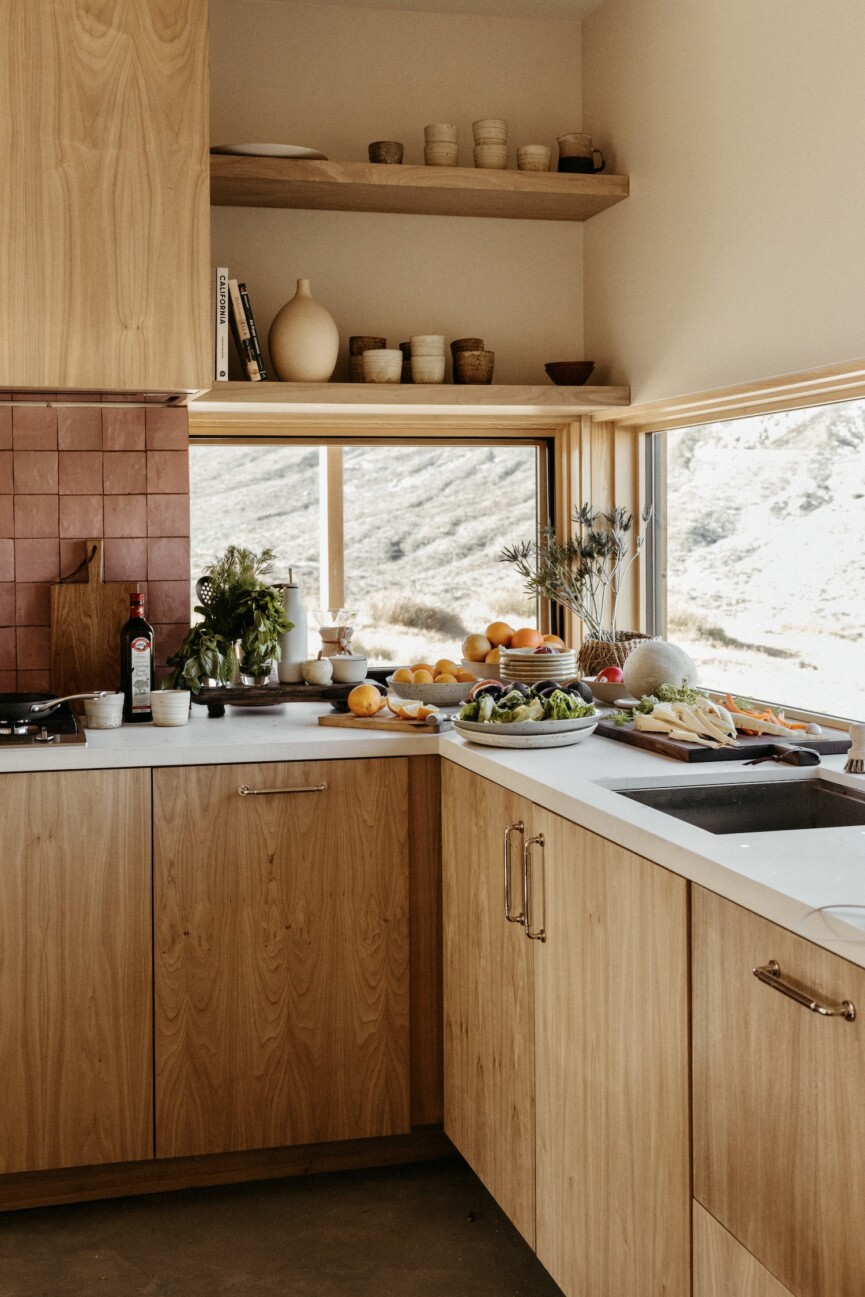
Start Small: The Magic of a Windowsill Garden
Herbs are a kitchen’s best friend. Instant decor and meal upgrades, fresh herbs are the lowest lift when it comes to at-home gardening. They’re an easy win (plus, easier on the environment), grow well indoors, and help foster the connection between earth and plate.
While you can start herbs in just about anything, small terracotta or ceramic containers with drainage holes are ideal, as is using a lightweight potting mix that’s specifically noted for herbs or indoor plants. Use a saucer or tray to protect your countertop or windowsill, and pick the sunniest spot you can. Most herbs need at least 4–6 hours of sunlight per day, in a south- or west-facing window.
Best Beginner Herbs
- Basil: Loves warmth and sun. Keep the soil consistently moist (but never soggy), and pinch off any flower buds you notice to keep leaves sweet and tender. Harvest often to encourage continual growth.
- Mint: Hardy and aromatic, though best grown in its own pot (it likes to spread). Mint thrives in partial sunlight and can tolerate a bit more shade than other herbs. Water regularly, and don’t be afraid to prune it often. It bounces back quickly.
- Chives: These slender, onion-flavored greens are happy in a bright window and only need light watering. Cut about an inch above the soil when harvesting to keep them producing fresh shoots, which they should regrow effortlessly.
- Thyme: Woody and fragrant, this thrives with just a bit of attention. Thyme prefers well-drained soil and less water than most herbs, so let the top inch of soil dry out before watering. It’s slow-growing, so harvest lightly at first, then more freely once established.
Favorite herby recipes to get inspired: Super Greens Frittata, Herby Green Chickpea Falafel, Pea Salad with Mint and Microgreens.
Grow Up: Maximize Your Wall Space
When you don’t have much square footage, you can also grow up. Vertical gardening can be a smart, beautiful solution for small balconies, patios, or even a sunlit wall indoors. With the right setup, you can turn the side of your apartment—or even a blank kitchen nook—into a lush little sanctuary. Spend a weekend getting crafty, and you’ll not only create more space for plants, but invite more life, color, and calm into your home.
- Wall-mounted planters: Great for herbs or compact greens, these bring the “garden” to eye level. Try a three-tier system for visual interest. See: How to Make a Garden Planter Out of Pallet Wood
- Ladder shelves: Lean a ladder-style shelf against a wall and layer it with potted herbs, trailing vines, or shallow veggie boxes. See: How to Make a Plant Ladder Shelf
- Hanging pocket gardens: Made of felt or canvas, these create a green tapestry—perfect for leafy greens and trailing plants on a balcony or fence. See: How to Make a Hanging Garden From a Shoe Organizer
All of these options are space-saving, renter-friendly, and can easily expand your small garden real estate.
Best Vertical Plants
- Oregano: A Mediterranean classic with small, fragrant leaves. Grows beautifully in wall planters or hanging baskets. Let it cascade or give it a trim to stay bushy.
- Parsley: Upright and compact—ideal for vertical pockets or small pots. Thrives in cooler temps and partial sun. Keep snipping and it keeps growing.
- Strawberries: The jewel of summer. Use hanging baskets or stackable planters so vines can spill over the edges. Sun-loving and kid-approved.
- Lettuce & Leafy Greens (arugula or spinach): Fast-growing with shallow roots, these are ideal for vertical wall systems. Harvest the outer leaves often to keep them producing. They love cooler, filtered light.
- Peas: Plant at the base of a vertical trellis or pocket garden and let them climb. Sugar snap or snow peas are easy to grow and quick to harvest.
- Cherry Tomatoes (dwarf/bush varieties): There’s no pride like the pride of your first red orb. Grow in a deep, wall-mounted container or large hanging pot with built-in support. Look for varieties labeled “patio” or “determinate” for best results in small spaces.
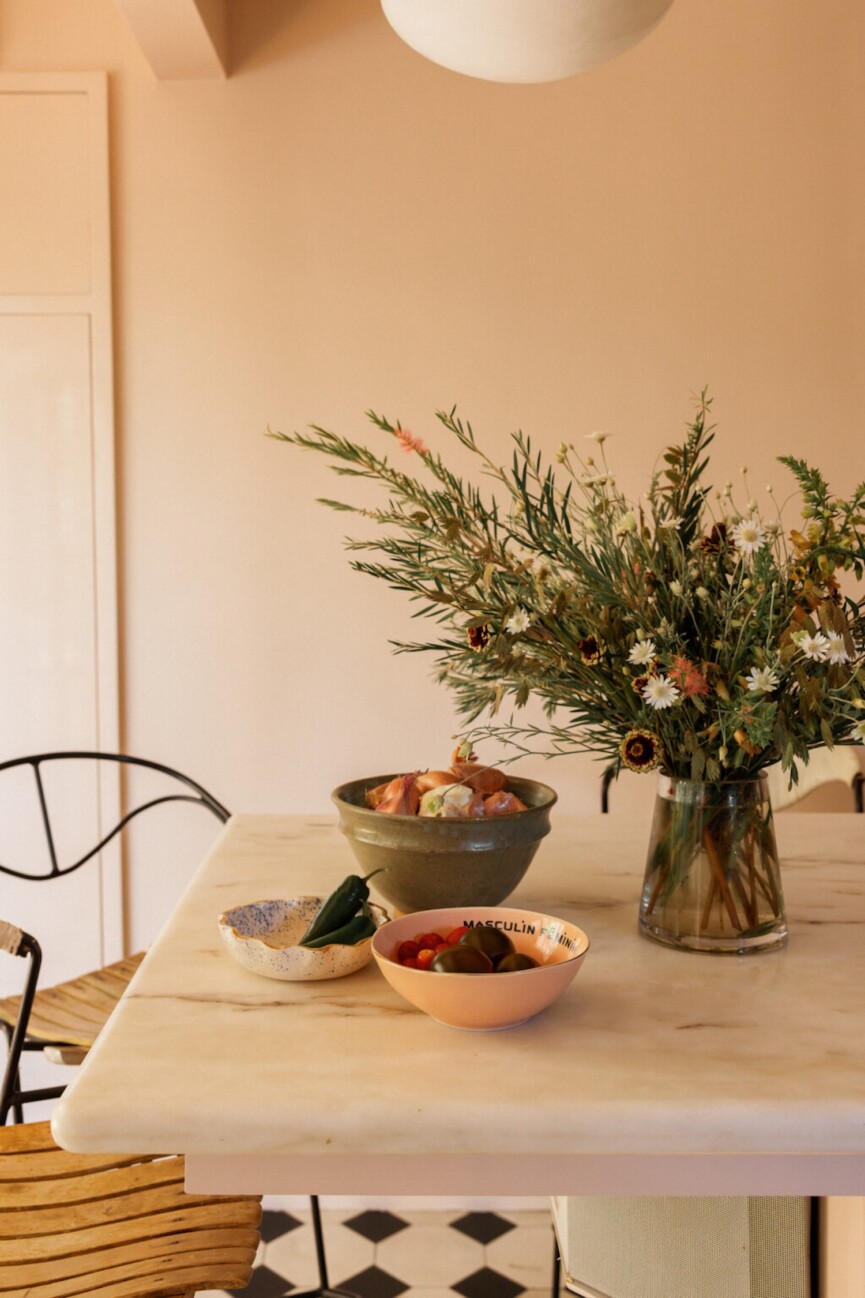
Indoor Wild: Forage with Nature in Mind
Creating space to nurture and tend to something green can still happen indoors, even if you didn’t grow it yourself. Foraging can awaken your senses, foster presence, and connect you to the rhythms of the season. Nature is the ultimate backyard and can provide endless inspiration for decorating your home—often inexpensively and in a more eco-friendly way.
Urban Foraging: A Quick Introduction
Urban foraging is the practice of responsibly gathering natural plants, herbs, or blooms from your environment—whether that’s a park path, roadside trail, or even the edges of your yard. While it may sound rustic, it’s surprisingly accessible with a little intention and a keen eye. Depending on where you live, your foraging finds will change with the season, but that can be part of its magic. Keep an eye out for wild herbs (rosemary, sage, mint, lemon balm, fennel fronds), edible flowers (do your research before tasting!), or seasonal finds like flowering branches or golden grasses.
A few other basic safety tips:
- Always positively identify plants before picking, as some lookalikes can be toxic.
- Forage away from roadsides or areas sprayed with chemicals (avoid runoff zones).
- Follow the “one-in-ten rule“, which means only clipping one in every ten plants so nature can replenish.
- Check local foraging regulations—some parks or cities have restrictions.
Think of foraging as mindful gathering instead of just taking, appreciating what nature has to offer and learning to exist in symbiosis with her.
Layer with Houseplants for a Fuller Look
You can also weave in foraged pieces with your favorite houseplants to create an indoor oasis.
- Spider plants: Air-purifying and low-maintenance, with delicate baby offshoots.
- Pothos: Cascading vines that thrive in low light and perfect for shelves or wall hooks.
- ZZ plant: Practically indestructible and adds a bold, architectural touch.
Mix textures and heights—like leafy greens in the background with delicate wildflowers up front—to mimic nature’s organic feel.
The Beauty in Tending to What’s Small
For all the times that I’ve romanticized a sprawling, lush garden, I also come back to the many windowsill basil plants that have brought me joy through their fragrant leaves. Caring for one plant is the prerequisite to the someday garden of your dreams, so don’t underestimate the ritual of caring for what is small.
Spotting a strawberry fruiting by your window, or clipping some mint for your tea—it’s empowering and grounding to feel in flow with your surroundings, and any sized plant can grant you that. So here’s your encouragement to let your garden take whatever shape it will, just give it the chance to start. No matter what, you’re bound to let some light in.













